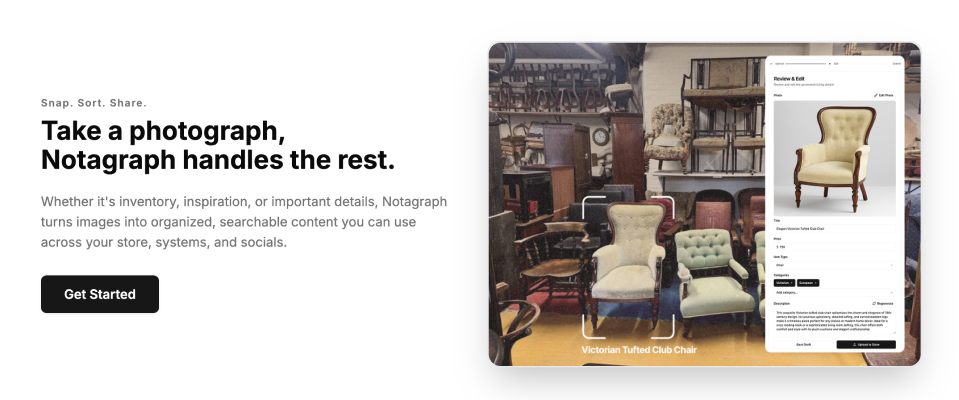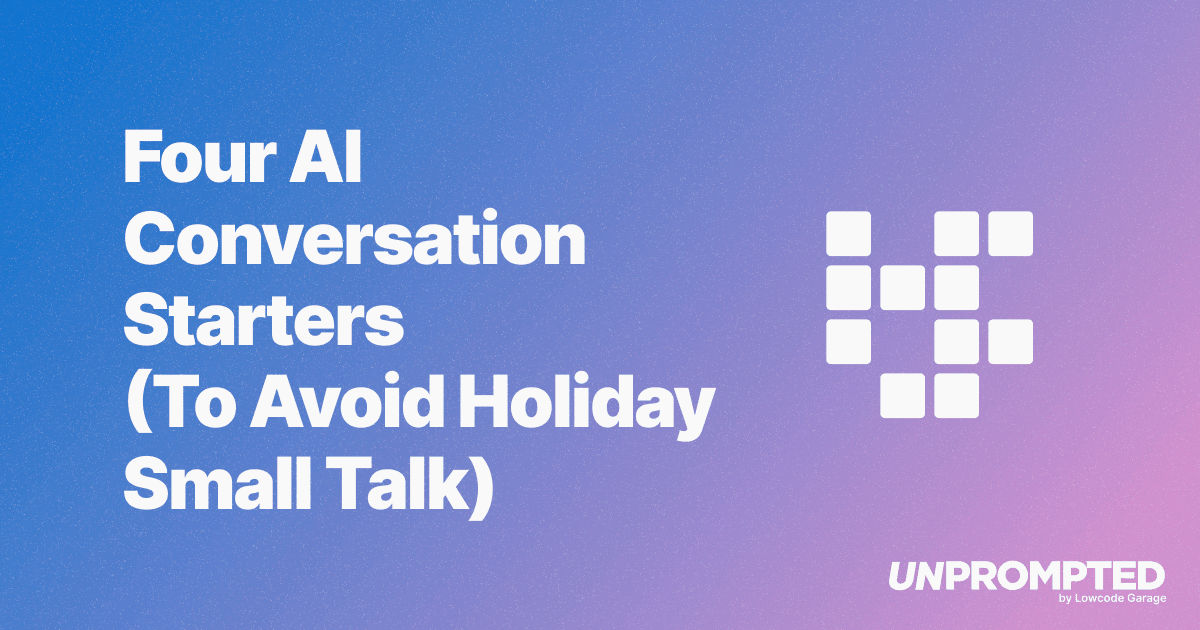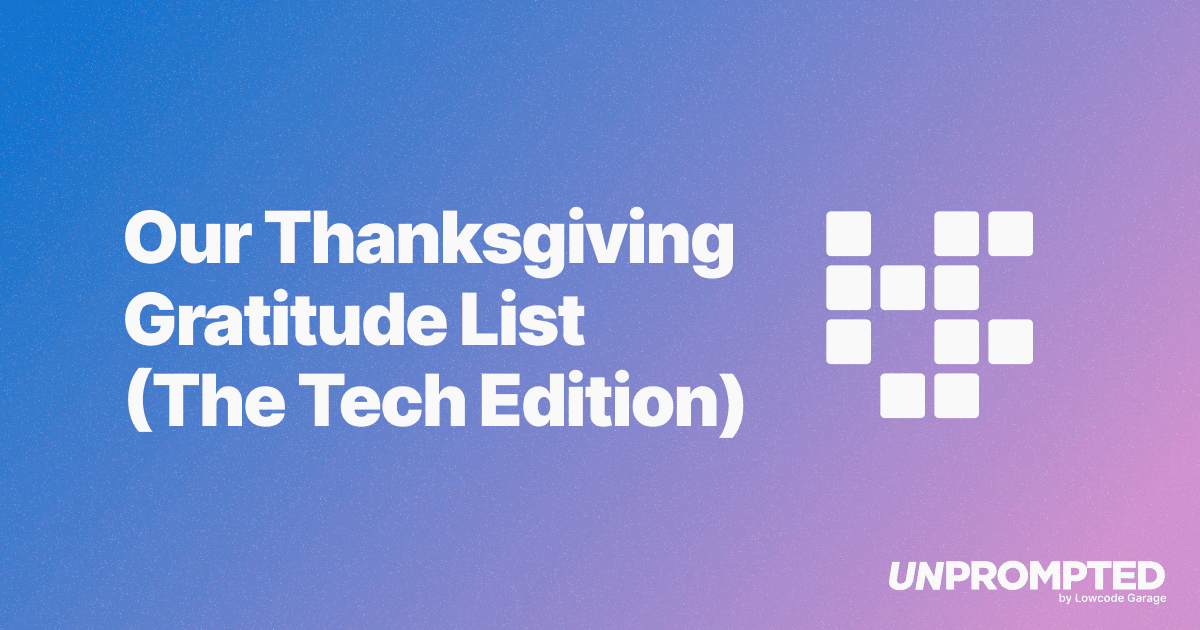From Storefronts to Systems
Shopify's updates solve the frontend. Tools like Notagraph are tackling the backend grind.
Shopify's updates solve the frontend. Tools like Notagraph are tackling the backend grind.
We love buying stuff online (probably a little too much), and we know you do too. So this week, let's talk about ecommerce.
Shopify made it easy to launch a store online, but running and maintaining one is a completely different story.
Uploading photos. Writing product descriptions. Managing inventory.
It's why many brands still need a full-time ecommerce manager—sometimes an entire team—just to keep everything updated.
Platforms like Shopify, WooCommerce, and BigCommerce solved a lot of hard problems:
- Accepting payments
- Managing logistics and fulfillment
- Creating mobile-friendly storefronts
But day-to-day operations? Still time-consuming. Still manual. Still overwhelming—especially for small businesses.
We recently spoke with a high end furniture and antique store owner who flies two employees from Paris to New York just to photograph and catalog thousands of unique items—each one needing its own listing. It's a huge cost in time, travel, and labor.
So what's changing?
Shopify's Next Chapter: Built with AI at the Core
This summer, Shopify announced its biggest update yet—Horizons, a sweeping set of 150+ improvements, many of them powered by AI.
It marks a new phase of ecommerce: one where manual busywork starts to get automated away.
Here are a few standout features:
🧠 Sidekick: Shopify's upgraded AI assistant can now analyze trends, spot problems (like declining sales), and suggest what to do next—drawing from inventory data, marketing activity, and seasonality.
💬 AI Shopping Agents: With the new Storefront MCP protocol, developers can build AI-powered agents that help shoppers search, ask questions, get personalized recommendations, and check out—all in natural language.
📚 Knowledge Base App: Automatically turns your store policies into AI-friendly FAQs—and shows you what customers are asking about most so you can refine your messaging.
🎨 AI Store Builder & Theme Customizer: With just a few keywords, you can launch a fully designed store. Want to adjust the layout? Just describe it. AI does the rest.
These updates are powerful. But they still mostly help after your products are online. What about all the grunt work that comes before? The input problem is real–how all those products, photos, and descriptions get online in the first place.

Solving the Input Problem
New AI tools are coming to the market that look to solve this very issue.
One example is a tool called Notagraph, that helps you capture what's happening in the real world—and instantly turn it into website-ready content with all the details filled in.

Whether you're uploading inventory, recording a property walkthrough, or snapping ideas on the go, Notagraph transforms photos, videos, and voice notes into:
- Product listings for Shopify and other ecommerce platforms
- Organized reports and documentation
- Searchable meeting notes and whiteboard captures
- A personal idea vault connected to your visuals
If you're running a store and spending hours on manual uploads, this could save you a lot more than time.
Reply to this email or [book a demo here] if you want us to show you how it works.
Quality In, Quality Out
There's a saying you often hear in finance: garbage in, garbage out. Whether you're building a financial model, running a system, or managing a website—if the input is messy, the output will be too.
That's why this part of the process is arguably the most important: your data, inventory, and products need to be clean, accurate, and well-documented if you want everything else to work properly.
Notagraph and other AI tools are designed to make that kind of process effortless—with just your phone.
And the tech is here, today. It's like having two Parisians in your pocket, minus the airfare (and headaches).
Frequently Asked Questions
Continue Reading

AI Is a Tool, Not a Strategy
Henry Kravis reminds us that AI is a productivity tool, not a strategy. Strong management, cultural fit, and operational fundamentals still determine whether businesses succeed or fail.

Four AI Conversation Starters (To Avoid Holiday Small Talk)
Four timely AI conversation starters covering federal vs state AI regulation, Opus 4.5 capabilities, physical AI in construction, and Michael Burry's bet against Nvidia—perfect for surviving holiday small talk.

Our Thanksgiving Gratitude List (The Tech Edition)
Discover the AI tools transforming how we build products at Lowcode Garage. From publishing content with Claude Desktop to building prototypes in weeks instead of quarters, here's our Thanksgiving gratitude list for the tech that makes it all possible.